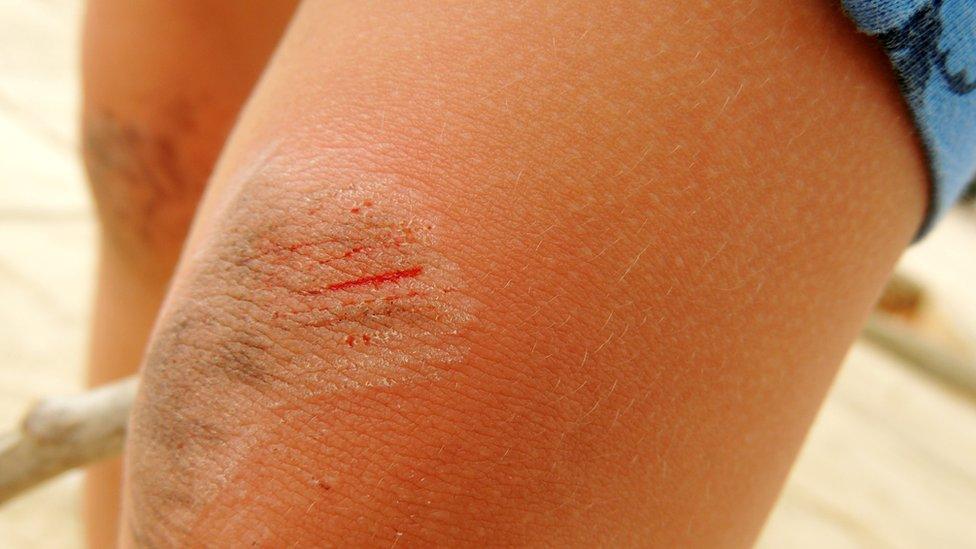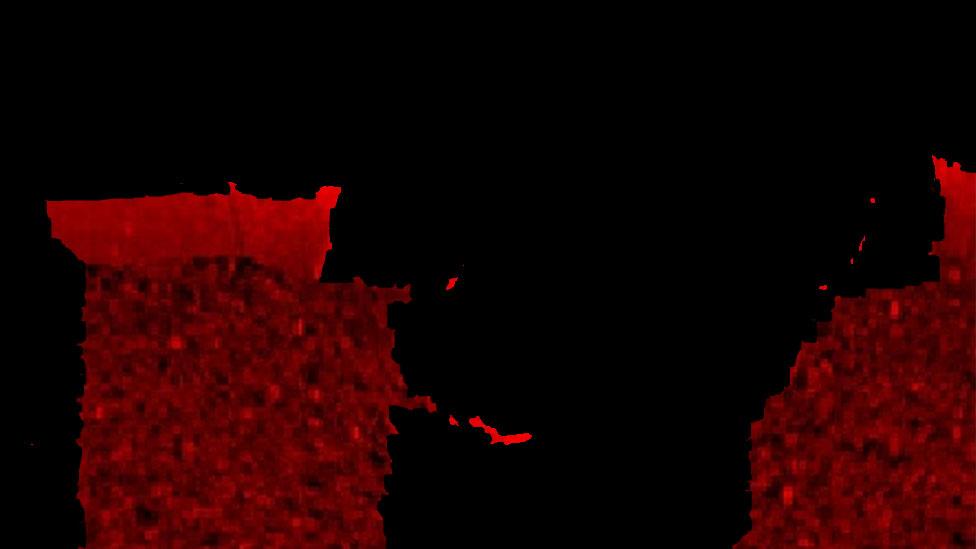Why petroleum jelly may not be the best thing to heal cuts
- Published

The label says petroleum jelly can help protect minor cuts, scrapes and burns.
But new research suggests immediately slathering an open wound with this ointment might be a bad idea.
Scientists have studied how the skin creates its own "natural plaster" to help heal these injuries.
Oil-based substances, such as petroleum jelly, appear to disrupt this important process, and might increase the risk of wound infection, they say in the Journal of Clinical Investigation.
Cuts and grazes
The American Academy of Dermatology, external recommends petroleum jelly for keeping a wound moist and to help prevent it from drying out and forming a scab, because they take longer to heal. This will also help prevent a scar from getting too large, deep or itchy.
As long as the wound is cleaned daily, it is not necessary to use anti-bacterial ointments, says the AAD.

See more stories and videos like this
Some NHS hospitals recommend it to patients with surgical wounds that have already started to heal, and it forms part of the first aid kit, external in some contact sports, including rugby union where it is used by the England team.
However, Prof Robert Ariens and colleagues at the University of Leeds say their observations with human and animal tissue suggest this may not be the best immediate approach to wound management.
They found that a microscopic protein film forms rapidly over a wound as part of the natural clotting process.

Medical imaging reveals the film - made up of a substance called fibrin - has tiny pores that let air reach the wound but are too small to allow bacteria and some viruses to pass through.
Prof Ariens said: "We did laboratory and animal studies which showed this film could be a barrier against microbial infection for at least 12 hours, and this gives the immune system time to get white blood cells to the wound to counteract any infection."
Adding petroleum jelly perforated the protective film.
Prof Ariens said: "If you get a scrape or a cut it is best to let it clot for half an hour to let the film form. Do clean it of course if it needs it, but the clot will make its own perfect plaster. After that, it might not be so bad to add petroleum jelly, but before then, from our findings, it appears to damage this film."
Independent wound care advisor Jacqui Fletcher, who is also the clinical editor of the journal Wound UK, said: "You do see it used in sports. Boxing is a good example. If the fighter gets a cut they can use it to stop the blood running down the their face so that they can continue the fight.
"But that's about a quick fix rather than a suitable dressing."
She said, in terms of infection risk, a concern was using petroleum jelly that had been kept in the cupboard for a long time.
"People tend to have pots that have been open for a long time and dip a finger in, which might not be clean."
The manufacturer of a leading brand of petroleum jelly was contacted by the BBC for a comment.
Dr Nick Levell, president of the British Association of Dermatologists, said: "Skin healing is important in both the healthy and those with skin disorders.
"For example, leg ulceration is an increasing problem for elderly people. This research may lead to further real-life clinical studies to see how oil-based substances affect infection rates."